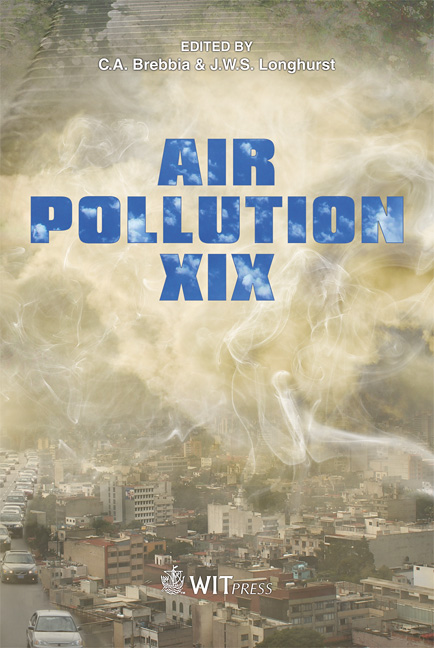BTEX Concentrations In The Atmosphere Of The Metropolitan Area Of Campinas (São Paulo, Brazil)
Price
Free (open access)
Transaction
Volume
147
Pages
7
Page Range
211 - 217
Published
2011
Size
664 kb
Paper DOI
10.2495/AIR110191
Copyright
WIT Press
Author(s)
A. C. Ueda & E. Tomaz
Abstract
Benzene, toluene, ethylbenzene and xylenes (BTEX) are hydrocarbons present in fossil fuels and, consequently, are also present in fuel combustion emissions, as toxic organic volatile compounds. Concentrations of these compounds found in the atmosphere of urban regions are indicative of vehicular pollution. In this work were studied BTEX atmospheric concentrations from five sites of metropolitan area of Campinas (São Paulo, Brazil), which have different characteristics: (1) suburban site; (2) downtown site; (3) urban site A; (4) urban site B; (5) industrial. The most abundant compound found in all sites was toluene (2.4 – 10 μg m-3). B/T ratio was used to study predominance of vehicular emissions and X/E indicates the distance from the site to the sources due to different photochemical reactivity of the compounds. It was possible to observe that sites away from the urban region and located in the predominant wind direction have lower concentration of BTEX as well as lower X/E ratios, indicating that pollution is due to transport emissions. Keywords: atmospheric pollution, BTEX (benzene, toluene, ethylbenzene, xylenes), urban region, vehicular emissions, intensity of traffic, photochemical reaction, X/E ratio, B/T ratio, passive sampling, gas chromatography. 1 Introduction Atmospheric emissions of a variety of gaseous pollutants are of great concern, mainly in urban areas. Some compounds, such as BTEX, are precursors of ground level ozone and are also harmful to human health. Benzene is known for its carcinogenic effect [1] and xylenes’ oxidation products may be toxic or
Keywords
atmospheric pollution, BTEX (benzene, toluene, ethylbenzene,xylenes), urban region, vehicular emissions, intensity of traffic, photochemicalreaction, X/E ratio, B/T ratio, passive sampling, gas chromatography





